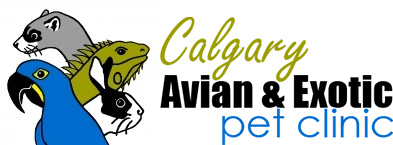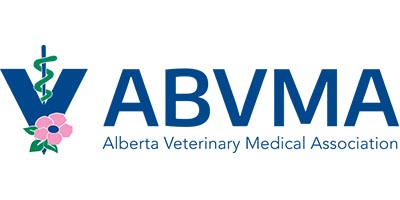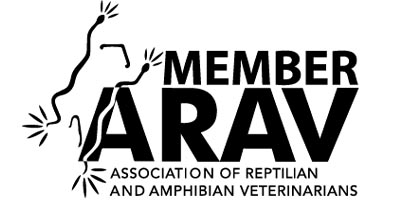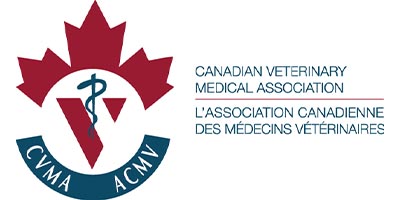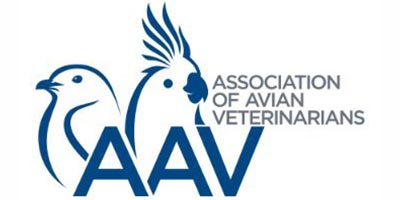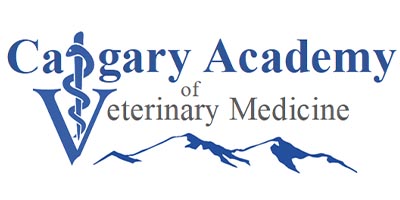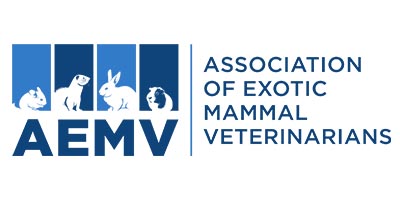The African Hedgehog is an insect eating nocturnal animal. It is covered in non-barbed spines that cover its back. The spines are absent on a small area on the head, on the legs and belly. The African Hedgehog rolls into a ball when threatened. It has a wide variety of vocalizations including grunts, squeals and snuffles, and may rub saliva and food onto its spines in a self-anointing behaviour called ‘anting’. Hedgehogs are adept at climbing, digging, and constant ‘jogging’. Hedgehogs can inflict a relatively painful nip and when balled up, the spines can inflict a painful jab.
HOUSING: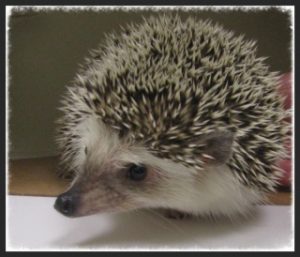
Hedgehogs are territorial and should be kept individually in smooth sided, easily cleaned, well-ventilated enclosures that provide enough room for uninhibited movement. The walls should be tall enough to prevent the hedgehog from climbing out and wire mesh should be avoided to prevent injury.
Bedding should be non-toxic, absorbent, dust-free and changed frequently to prevent skin irritations. Aspen shavings or a paper bedding is recommended. Do not use corncob bedding or cedar or pine shavings, as these can cause disease. Towels or blankets that shed fibers should be avoided, instead choose fleece or a baby blanket for nesting. Hedgehogs need a house to hide in. Hedgehogs can be trained to use a litter box and this should be cleaned daily. Do not use clumping cat litter, as it will ‘clump’ on hedgehog toes and cause medical problems.
Temperature is critical for African hedgehogs. Optimal temperatures range between 23-32°C (72-90°F) 24 hours a day. Below this, hedgehogs become increasingly susceptible to respiratory disease and far less active. If colder than 18°C (65°F), hedgehogs will enter a state of torpor (inactivity and listlessness).
African hedgehogs are nocturnal with poorly developed eyesight. Both mealtime and play time should be restricted to early or late evening. Creating a ‘play area’ outside the cage allows the hedgehog to move about and ‘forage’ for food – mimicking its natural behaviour and increasing exercise during its waking hours. Choose an escape proof dedicated space, warm and dimly lit. Build an obstacle course, complete with tunnels, ramps, brown paper bags and boxes and include an exercise wheel to allow for the pet’s natural need to keep moving. Hiding food and insects in various spots (placed fresh nightly) encourages the hedgehog to forage and try new foods. Provide toys to push, chew and roll as hedgehogs are naturally interactive with their environment. A slate tile to run across can help wear down the hedgehog’s toenails. Play areas should be cleaned every day.
DIET: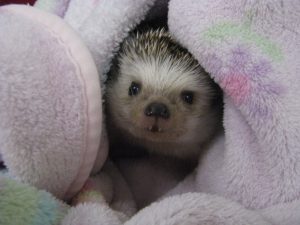
The exact dietary requirements of the African Hedgehog are not well known, but the hedgehog is considered to be an opportunistic insectivore, eating a wide variety of invertebrates, plant material, and occasional vertebrate in the wild. Cat food alone is inadequate and will lead to disease. Several diets have been used in captivity and the most successful include feeding a high protein, low fat diet of commercial hedgehog food with small amounts of high protein, low fat cat food, small amounts of diced fruits and vegetables (apple, dark leafy greens, banana, berries, carrot, grapes), crickets, earthworms, mealworms, and waxworms, cooked egg and cooked meats, low fat cottage cheese, and a fiber source, such as dried shrimp. Typically, 1 – 2 tablespoons of the main diet, with 1 – 2 teaspoons of moist food items, half a teaspoon of fruit or vegetable and insects as ‘forage’ or ‘treat’ food daily is adequate. Pregnant, lactating, or growing hedgehogs have a higher nutritional requirement and should be fed accordingly. Start young hedgehogs on a variety of food items early in their life to encourage them to eat different food items. Water should be available at all times from either a dish or a bottle.
HANDLING:
Hedgehogs learn to recognize their owners by smell and with patience, can be tamed to permit handling. Allow a newly purchased hedgehog time to acclimatize to its surroundings and ensure that it is eating before handling. Save favourite food items to hand feed the hedgehog as it slowly learns to trust human hands and when holding a hedgehog, cup it safely in both hands. It is not uncommon to find human hair wrapped around the legs of hedgehogs or trapped in their quills. Owners with long hair are encouraged to tie it back when handling their pet.
PHYSIOLOGY:
The African Hedgehog breeds all year long. Cannibalism, desertion, and infanticide are common problems when breeding hedgehogs. Orphaned or deserted pups, or ‘hoglets’, can be raised by foster females or hand raised on kitten or puppy milk replacer. Male hedgehogs have recessed testicles, so a scrotal sac is not present, but the male and female are conspicuous by their external genital openings, with the male’s prepuce obvious on the mid-belly. Both males and females have nipples.
Adult weight 250 – 600 grams
Life span 4 – 8 years
Sexual maturity 2 months
Gestation 34 – 37 days
Litter size 1 – 7 pups
Weaning 4 – 6 weeks
Pup eyes open 13 – 16 days
Pup spine development 24 hours after birth
COMMON DISEASES:
Hedgehogs often get their droppings stuck on their feet or in their quills and need to be bathed regularly, using a gentle soap and water solution and a soft vegetable brush or toothbrush to help scrub the quills and nails clean.
Hedgehogs can carry both external mites and internal parasites. External mites can cause flakey skin, tattered ears and marked quill loss. Veterinary exams of skin scrapings and fecal samples will help determine if a pet has parasites and which treatment should be used.
Hedgehogs are prone to respiratory infections, often a result of inadequate living conditions. Dental disease, eye injuries and infections, and ear infections are common. Hypoglycemia (low blood sugar) and torpor (listlessness) are common in hedgehogs not supplied with a heat source. Obesity is common. Trauma, typically caused by the environment (fibers wrapped around toes, legs, wire cages) is common and preventable. Hedgehogs are prone to gastric foreign bodies and upsets, urinary tract infections, and unfortunately, many forms of cancers. A neurological syndrome, termed ‘wobbly hedgehog syndrome’ has been recognized, the cause of which is still unknown. Hedgehogs with this syndrome will often present with balance problems that progress into limb paralysis. Hedgehogs have been documented as carrying Salmonella and Hoof and Mouth disease and human health precautions should be taken as warranted.
Hedgehogs are adept at hiding problems and illnesses. As with every pet, hedgehogs should receive a health exam once or twice a year by a veterinarian experienced in exotic pets to aid in early detection of problems and allow an update on the latest in care.
THIS INFORMATION IS MEANT AS A GUIDELINE ONLY AND IN NO WAY REPLACES CONSULTATION WITH A VETERINARIAN.
